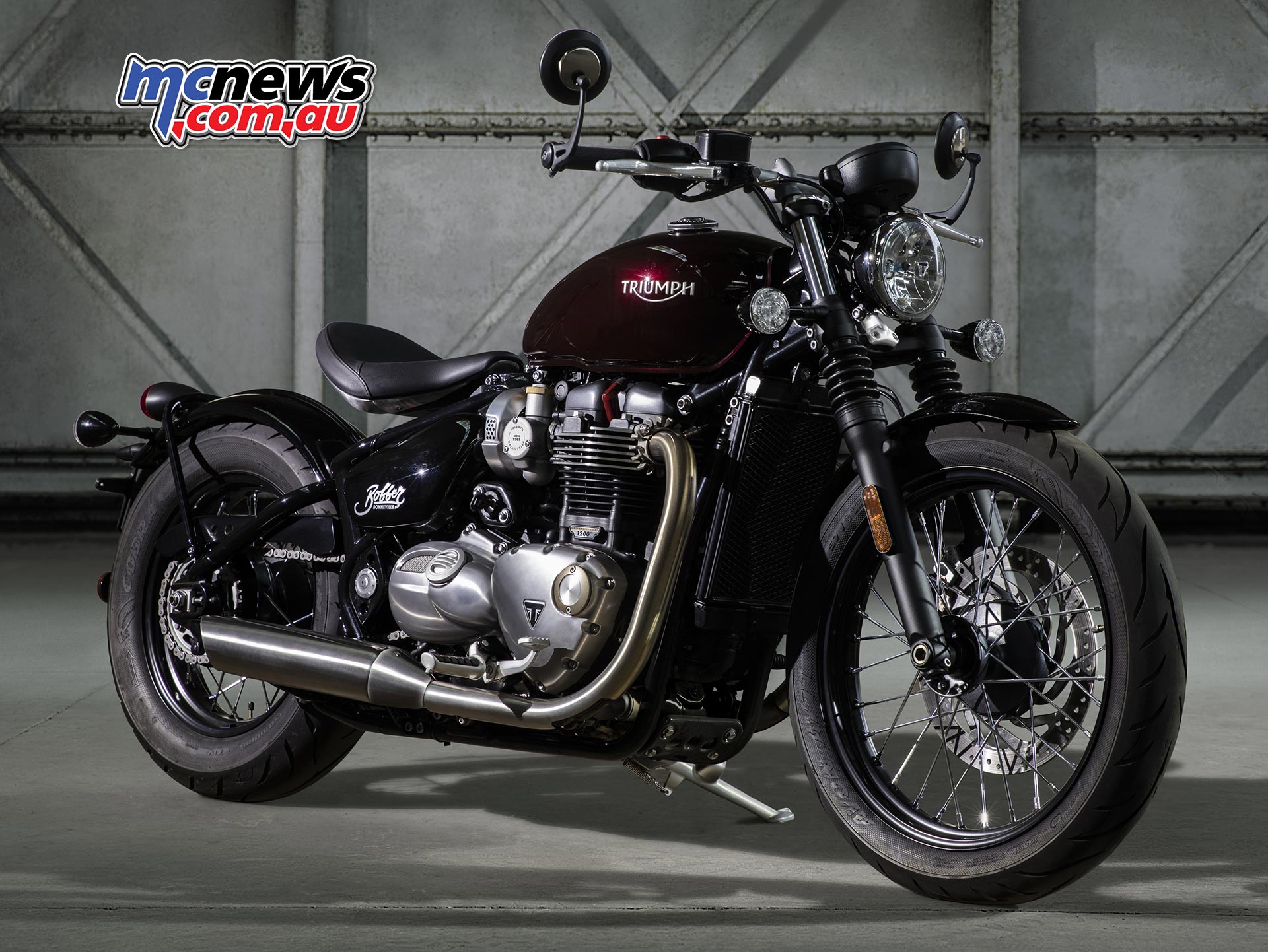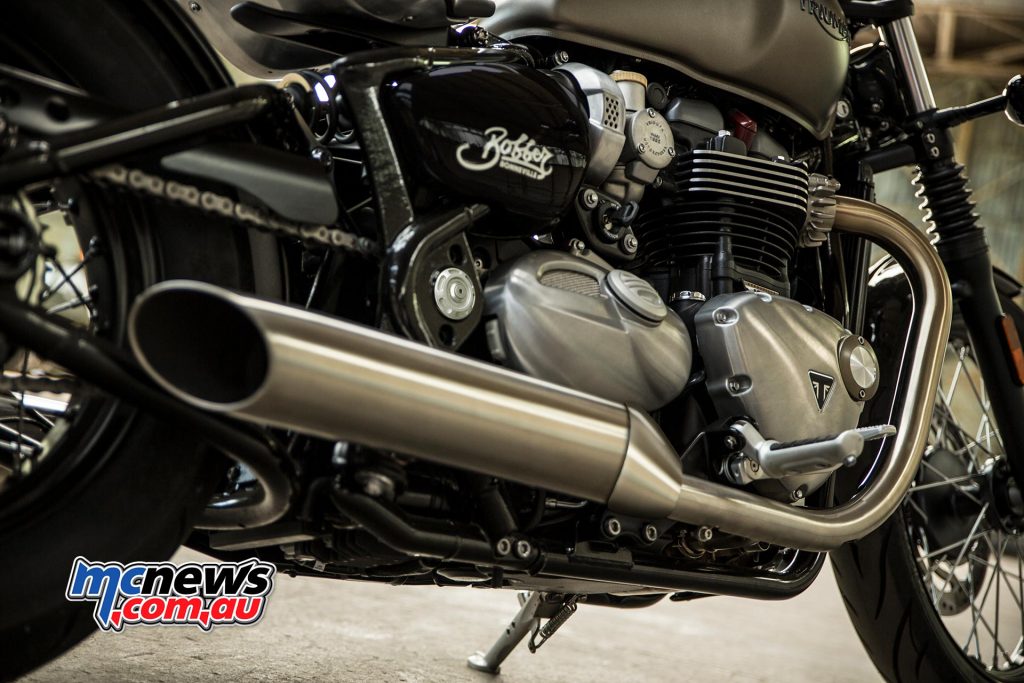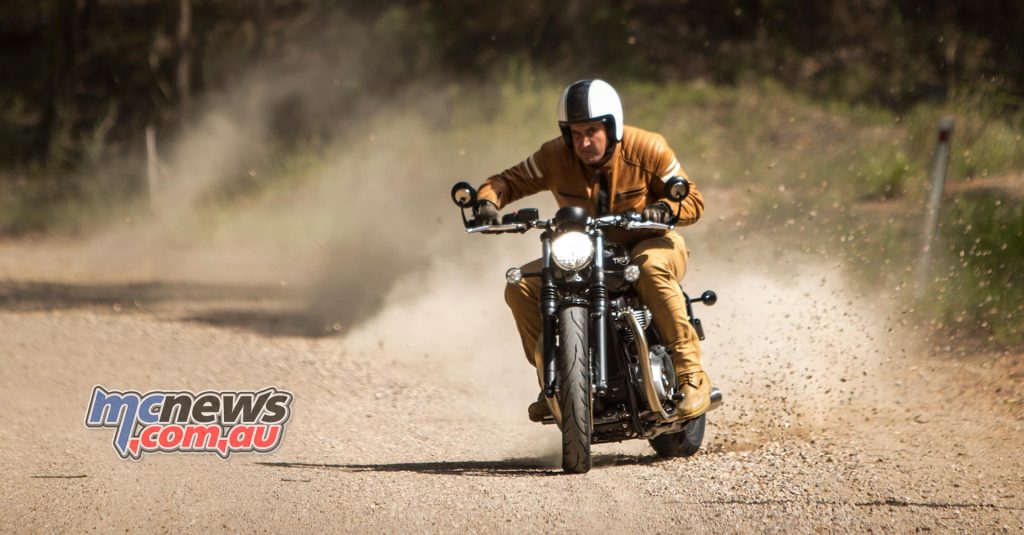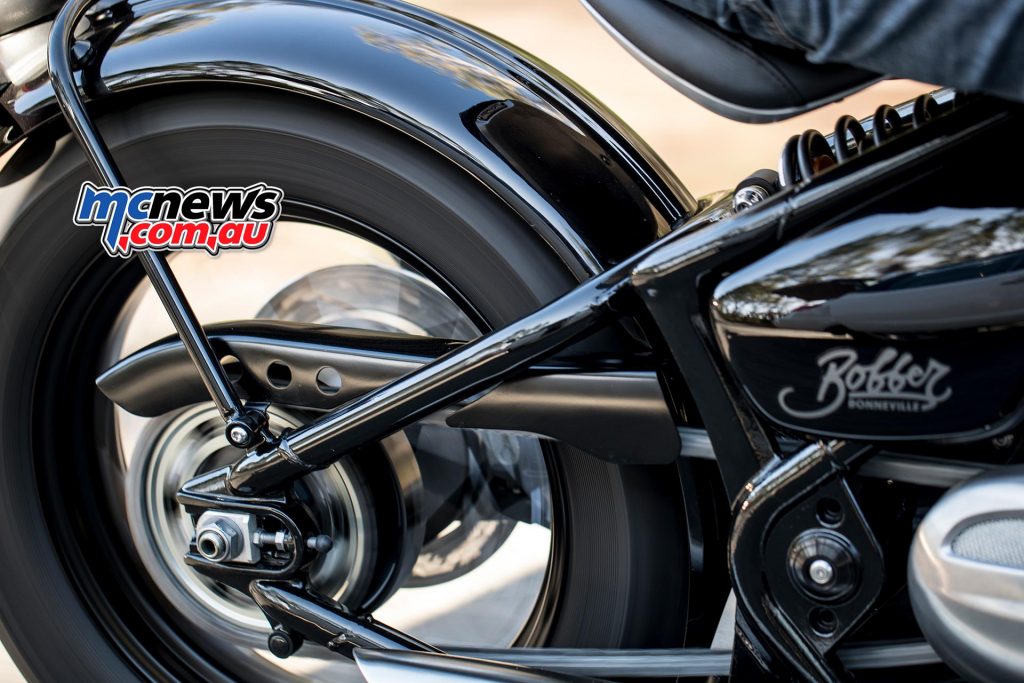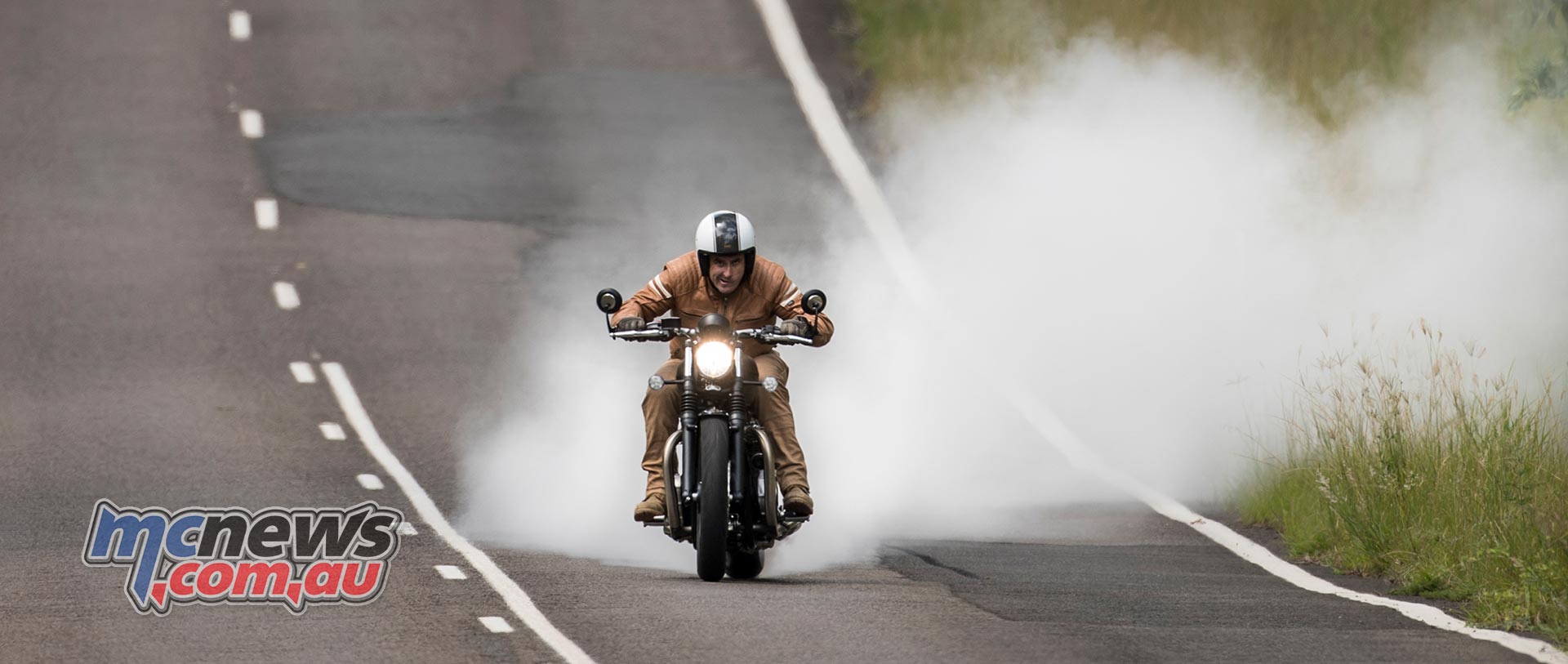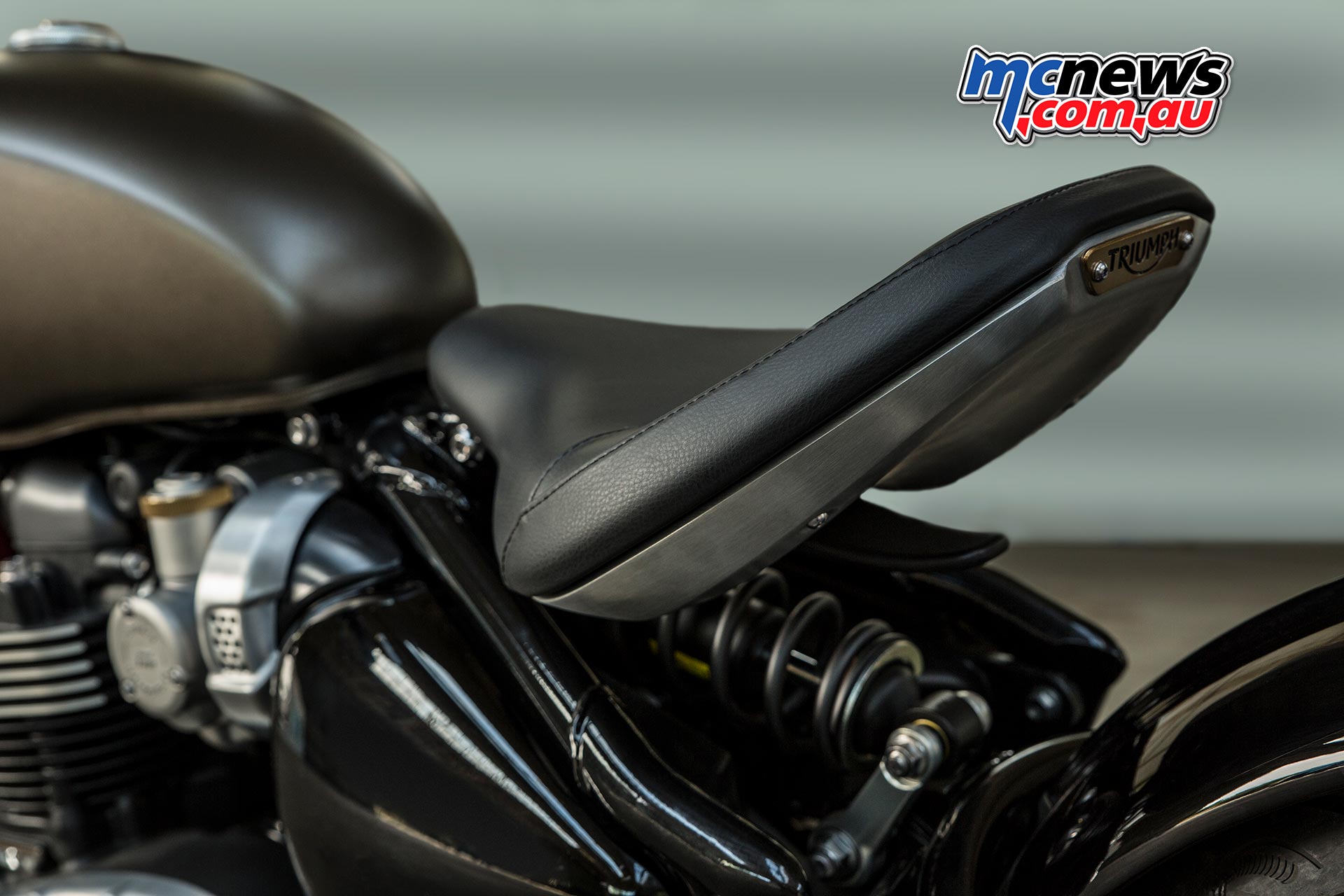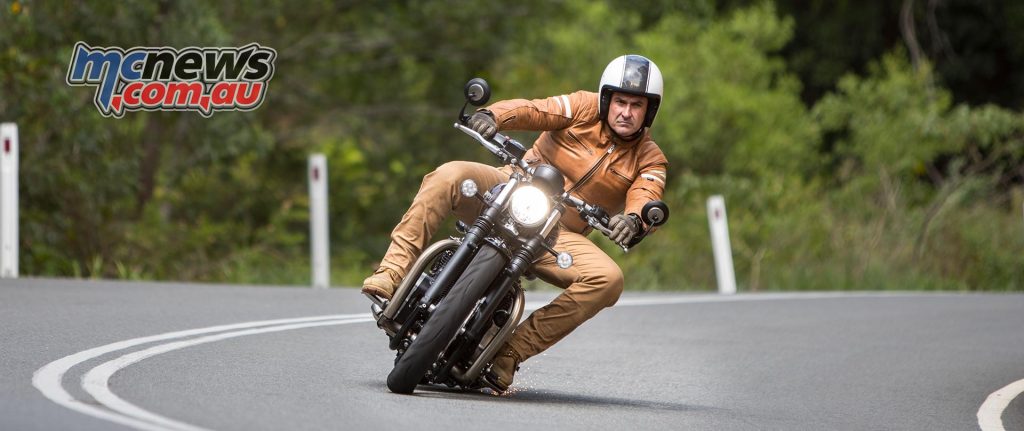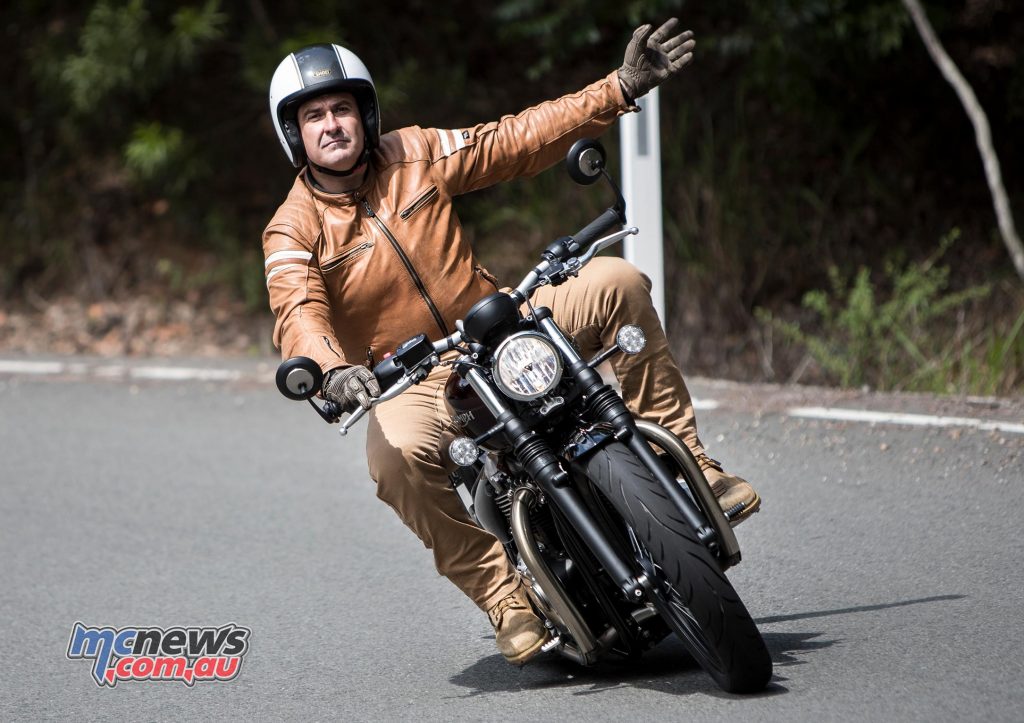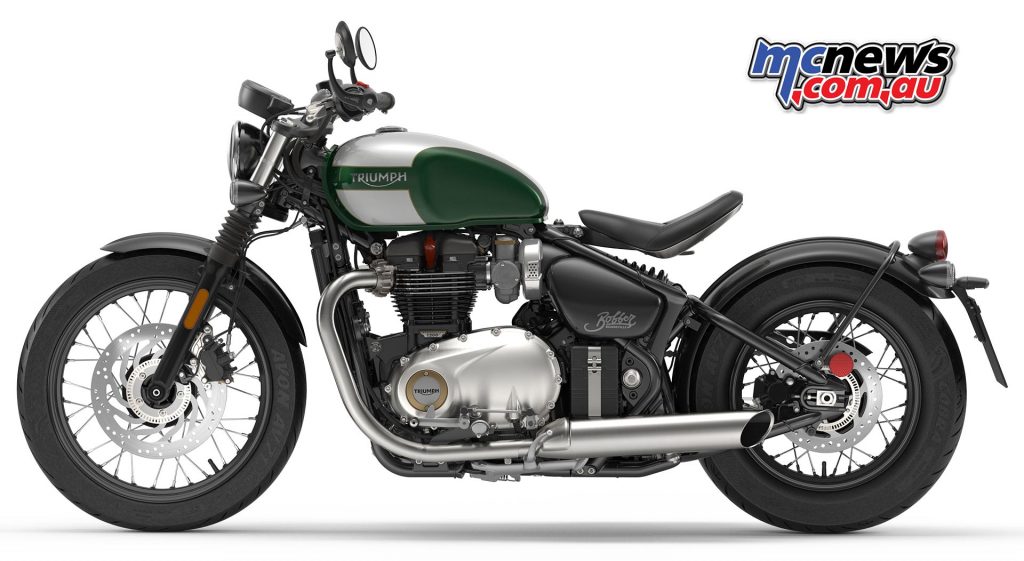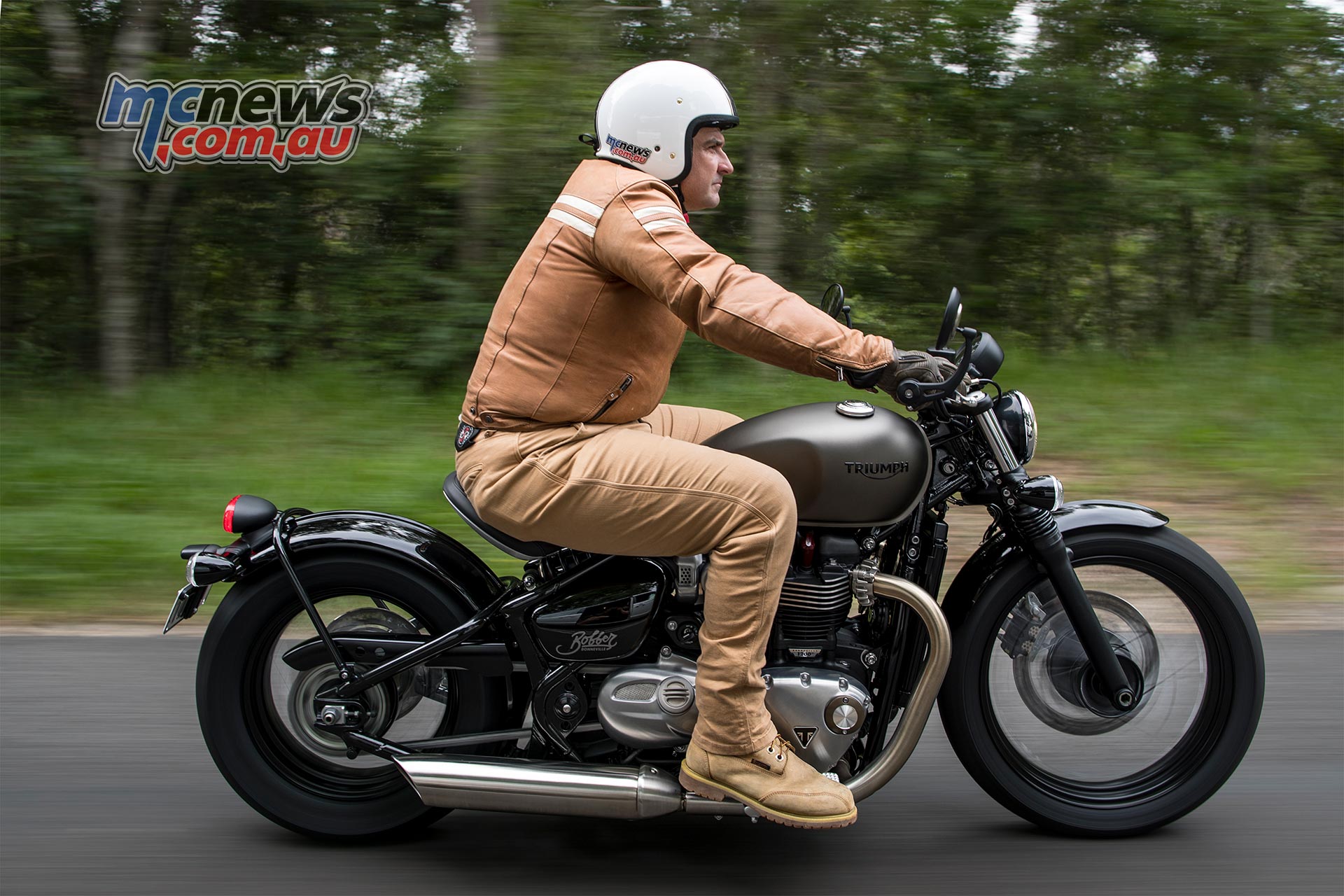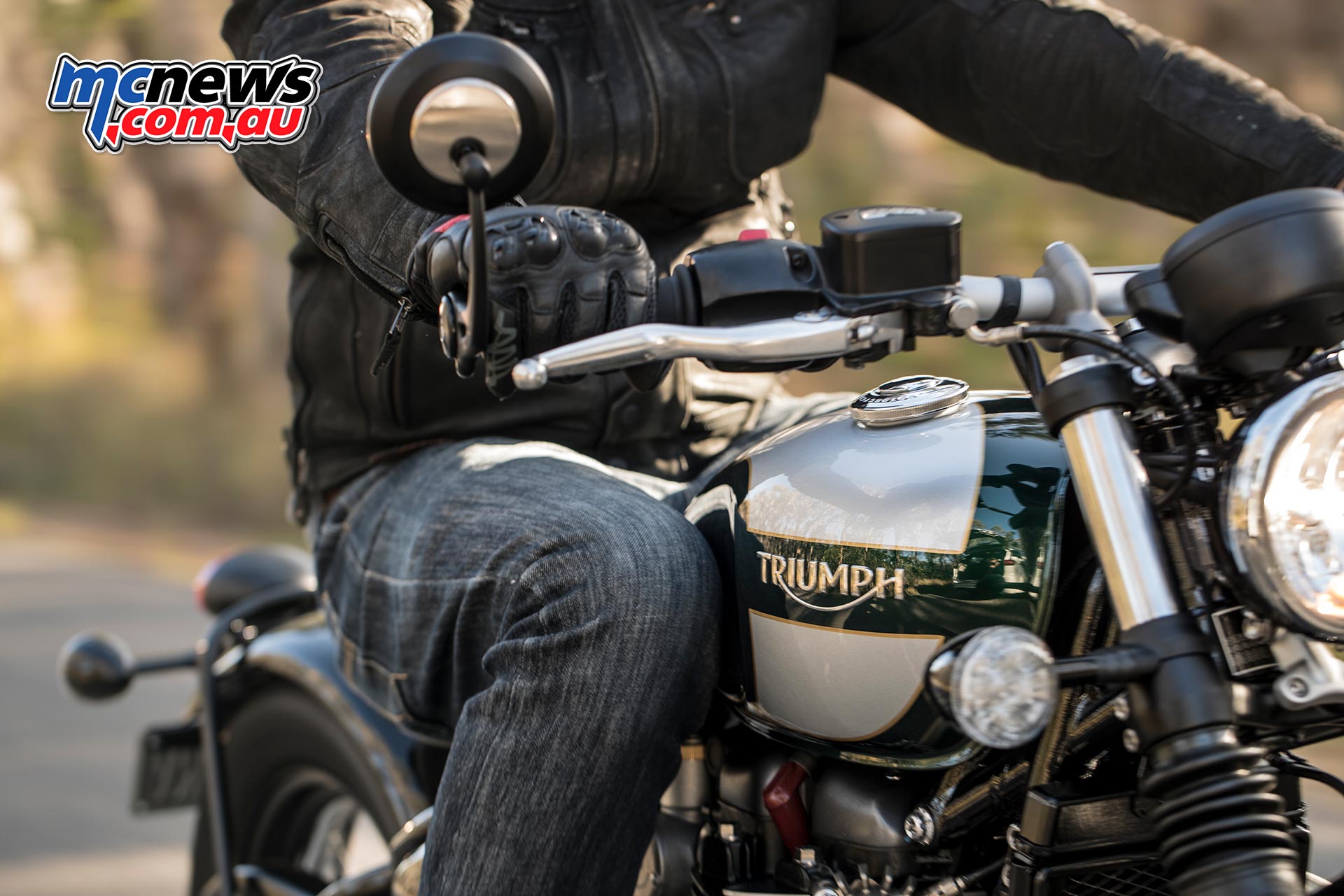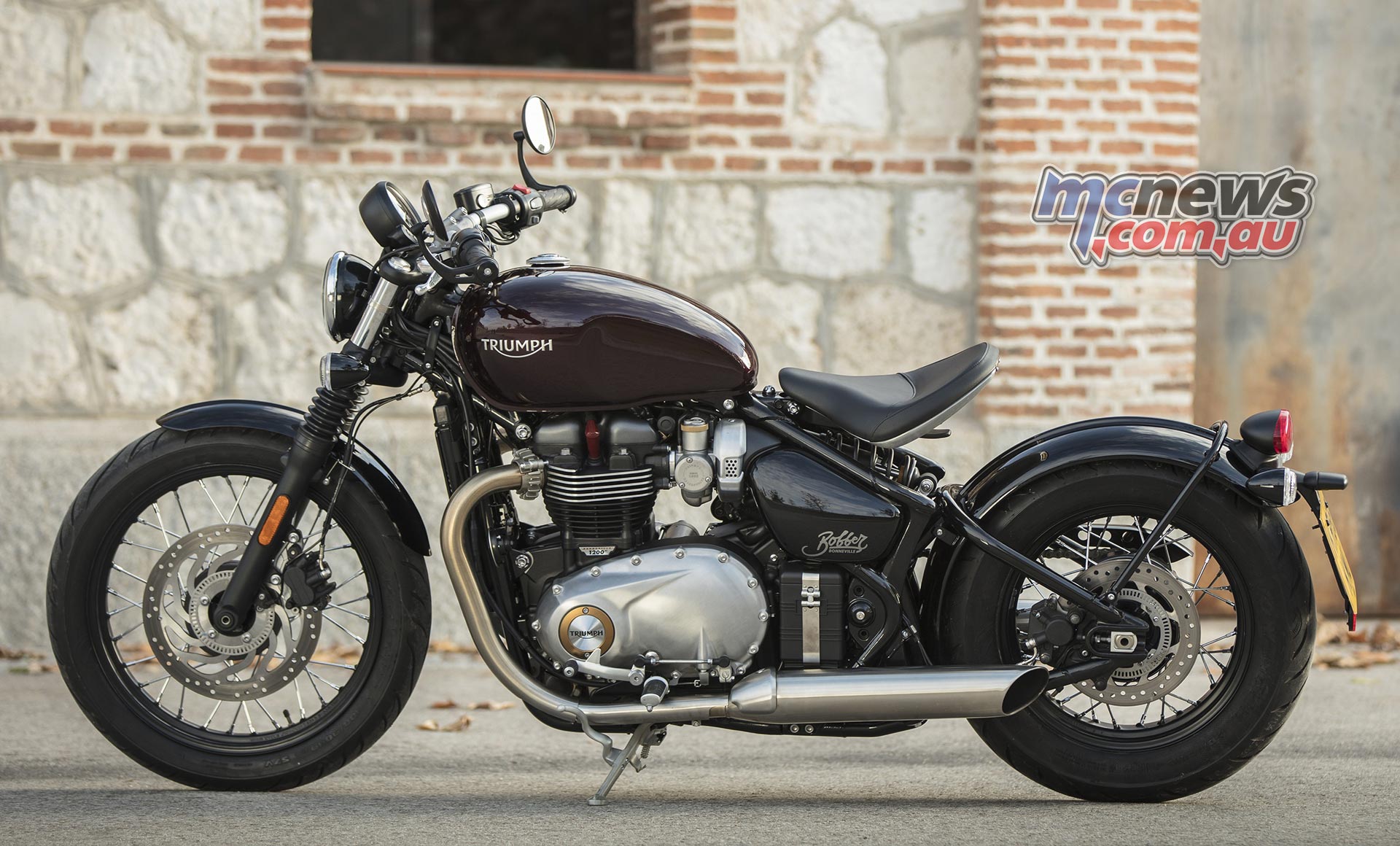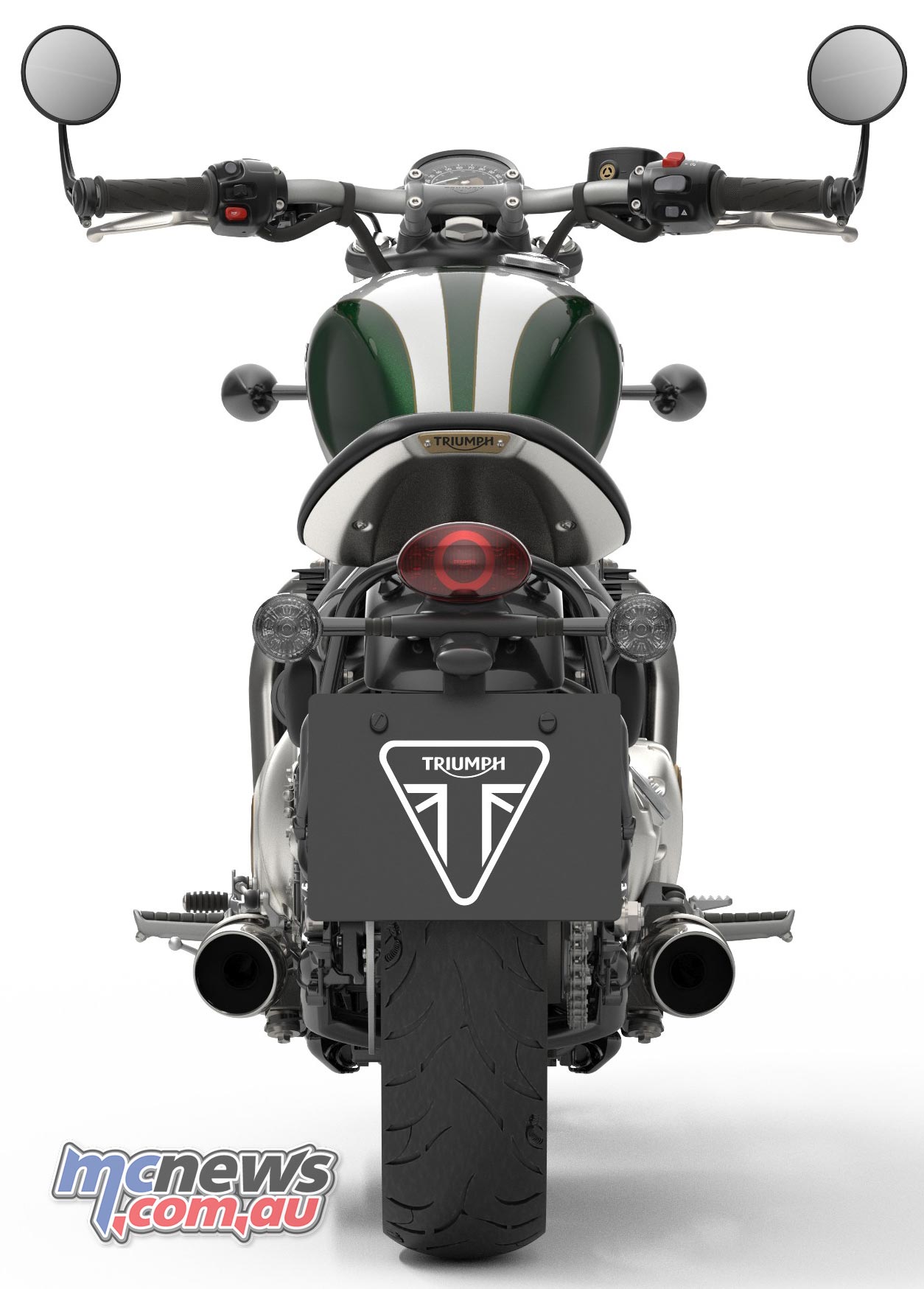2017 Triumph Bobber Review by Trevor Hedge
Triumph have spun off yet another variation from the new Bonneville platform, and this one is sure to be a top selling star in their burgeoning ‘Modern Classic’ line-up.
The handsome Bonneville Bobber is out to take on Harley’s Sportster range, and perhaps even lure over a few Softail customers over the Atlantic, while also taking the fight up to other machines, like Indian’s Scout.
The engine feels very different to that found in the T120, or Thruxton, despite it being essentially the same 1200cc, 270-degree, eight-valve, parallel-twin.
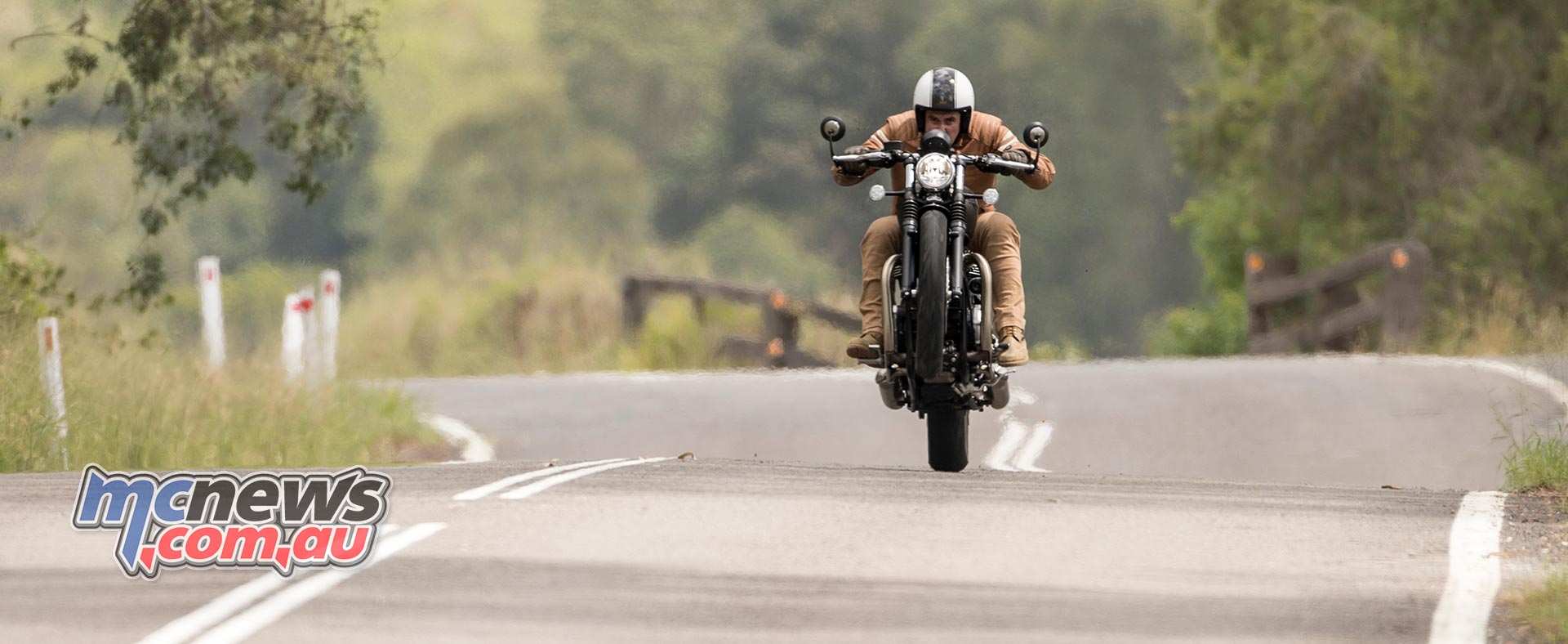
You might think that the Bobber’s more stripped back ‘poseur’ style suggests Triumph have detuned the bike a little from the T120. However, the Bobber actually pumps out more power and torque than the T120, delivered earlier in the rev range. 106Nm of torque peaks at 4000rpm, while the peak power of 76hp reaches its crescendo at 6100rpm.
ECU tuning contributes to the changes, along with the new twin air-box layout that feeds the 42mm throttle bodies. However, I feel it is the cam changes that have completely changed the character of the engine.
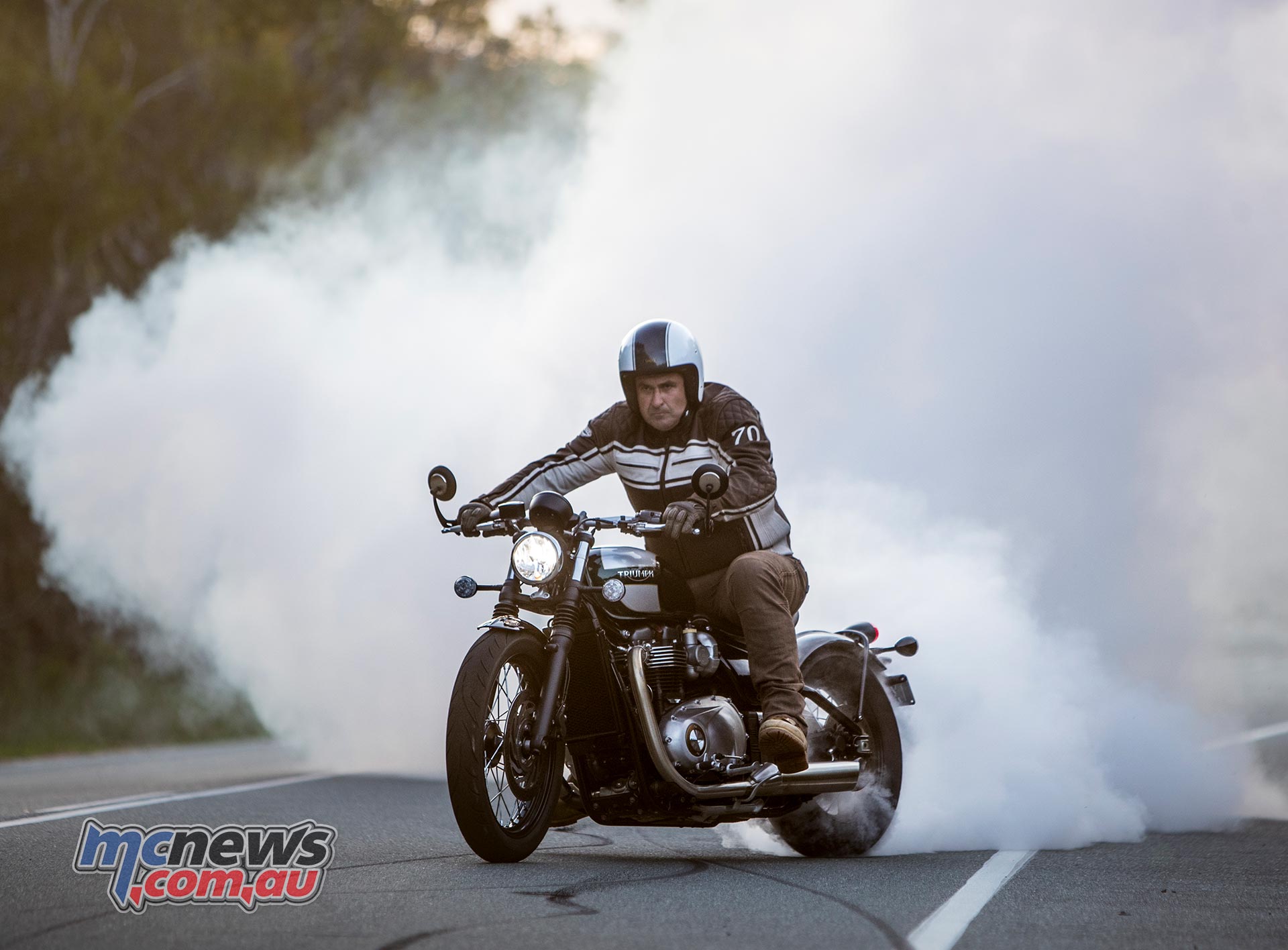
While Triumph could not provide us with the actual differences in duration and lift, I think the differences may be quite drastic. I suspect the ramp rate on the lobe is also markedly changed, along with the lobe centreline.
I judge that these cam changes were not so much aimed at performance, but adding a somewhat bad boy attitude to the engine. The fly-by-wire throttle also seems to be mapped with a greater sense of urgency under wrist than the T120.
It all adds up to enough mumbo to easily dispense with any of the big-bore Harleys off the line without raising a sweat.
Large diameter stainless steel, twin-skin, slash-cut mufflers emit quite a charismatic bark, louder than you might think when looking at them. The headers look great, and the balance pipe between them cleverly hides a catalytic convertor. This is one of the master strokes of the whole exhaust design, especially considering the massive fails the Japanese manufacturers repeatedly make in this area.
Two riding modes are offered, rain or road. Rain mode dullis the throttle response to make for the smoothest possible application in tricky conditions. While the ABS is not switchable, the traction control is. We demonstrate that below, purely for scientific testing purposes, of course…
Up front the braking hardware consists of a single 310mm disc clamped by a two-piston Nissin caliper. I would have preferred a little less effort at the brake lever when you want to stop 228kg of Bobber quickly. This is, no doubt, engineered in somewhat. Rapid front end dive would require stiffer fork springs to cope with stronger front stoppers. The rear brake is fairly strong, which certainly helps things, and both ends are backed up by an excellent ABS system.
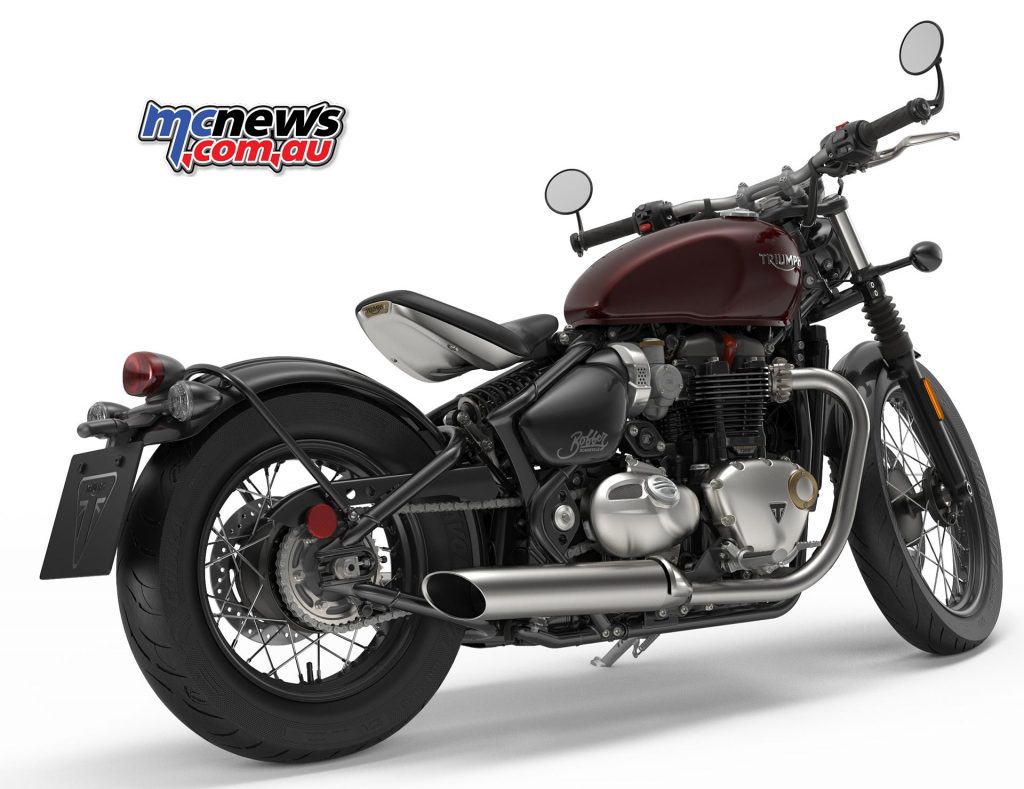
The KYB forks, like the shock from the same company, are non-adjustable, but do an admirable job in shrugging off road irregularities that would upset most of the bike’s competitors.
The ultra-minimalist rear end is the key to the stripped back styling of the Bobber. There are obviously some compromises made in the rear suspension design to provide this look.
The Bobber has almost 80mm of rear suspension travel, almost double what has been seen on some Sportster models, but over an inch less than Harley’s new Roadster. There is only so much you can do with three-inches of rear travel and overall the horizontally-mounted shock does an admirable job of retaining its composure.
Sharp edged bumps do deliver a fair thump to your rump, but I only winced twice during our 250km aboard the machine. Triumph do offer an upgraded Fox RSU adjustable shock as an option, it would be interesting to see what improvements that could bring to the ride.
How well the Bobber does scythe along a smooth stretch of blacktop genuinely surprised me. Ground clearance is better than many competitors in this area, but not class leading. That said, I really enjoyed riding the Bobber on mountain roads. Particularly smooth roads, where good line selection, and deft control of how your weight affects the bike, was rewarded with a very satisfying pace. I put the pegs down for this photo, but I could hustle the Bobber pretty well while keeping the pegs off the deck when I wanted to.
The narrow 19” front hoop certainly contributes to the eagerness the Bobber exhibits on change of direction. That large diameter 100/90-19 up front also helps endow the Bobber with great stability. The 150/80-R16 rear is also relatively narrow for this style of bike and, like the rear, is provided by Avon.
While the tyres are embossed as tubeless, the spoked rims are not designed for running tubeless, thus, the Bobber runs tubes at both ends. Why? I can only imagine the reason would be cost reduction, as making quality spoked rims tubeless is not an easy, or cheap, process.
Looking at the Bobber one would imagine it virtually impossible to strap any luggage on. However, Triumph have the solution already sorted, with two different sized bags available in a variety of finishes.
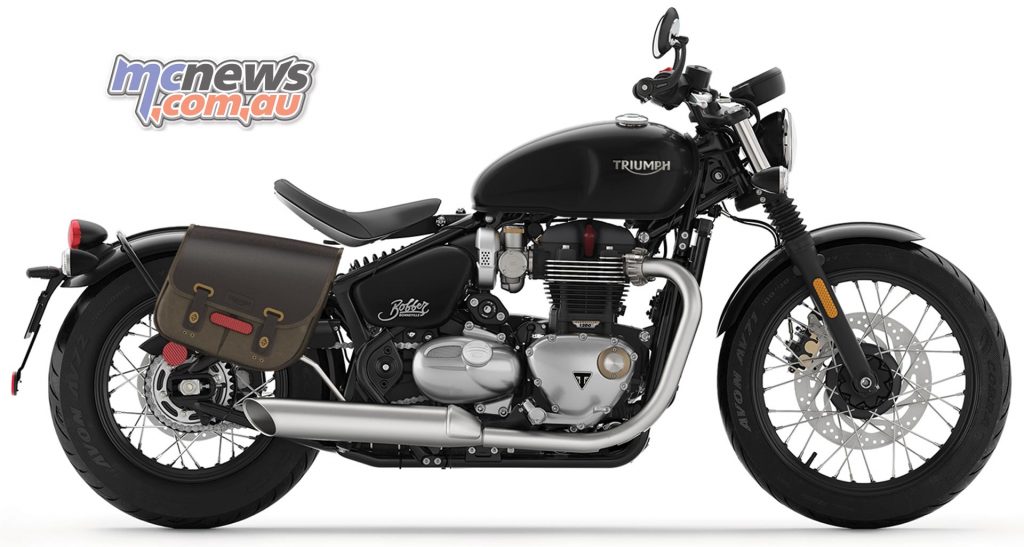
The handy swingarm mounted luggage is a great feature for any potential owner, although with a small 9.1 litre fuel tank I am guessing touring is not going to be high on the list of most Bobber owners. While that tank is minimal, it is two-litres more than that found on Harley’s hugely successful 48, and will provide a range of between 120 and 200km.

That actual number is purely dependent on how you are riding at the time but a fully functional tripmeter helps you to keep an eye on your economy.
Heated grips and cruise control are also on the options list, as is an attractive side-mount number plate hanger, ape-hanger bars and shorter guards.
The fairly minimalist seat is adjustable both fore and aft through a plane of 35mm via a slotted seat mount, which doesn’t sound much, but makes a stark difference that helps shorter, or taller, riders get more comfortable. Overall I found the Bobber pretty comfortable, obviously it is not as comfortable as a more conventional motorcycle, but Triumph have done a good job in ensuring the machine is not too tortuous. Traditionally, the seats on Bobber customs are positioned much further back on the machine, and I would imagine the aftermarket will soon bring out kits that position the seat more rearward, for that even more authentic bobber look.
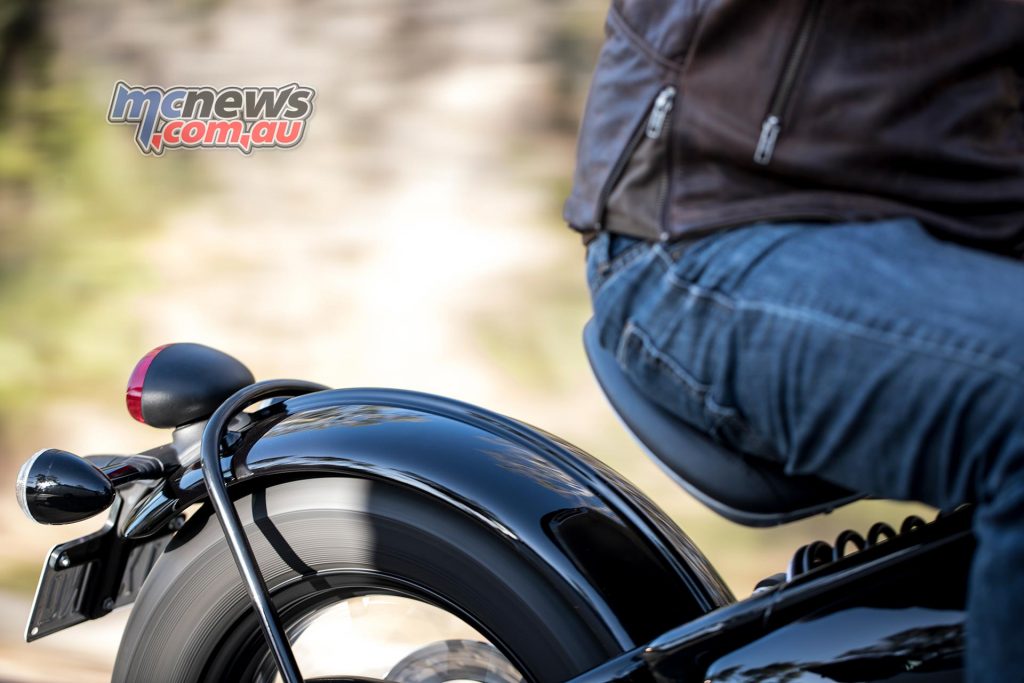
Seat height on standard settings is a very low 690mm. The instruments are also adjustable for angle, which helps cater for riders of different heights, or for riders which change their bars to lower clip-ons, or tall ape-hangers. Both brake and clutch levers are adjustable for reach, something quite rare in this segment of the market. The bar end mirrors also work quite well, and are vibe free.
16,000km service intervals are aimed at lowering long term ownership costs, with valve adjustments every 32,000km, but even that is an easy process due to easy access to the shims under the roller rockers.
At $18,000 it’s also extremely competitive on price when compared to anything that looks remotely this good, or is as well finished, especially considering the full suite of electronic safety aids that are fitted as standard.

Triumph are obviously aiming for volume with this model, as I reckon they could have got away with charging quite a bit more for the Bobber and still had plenty of takers.
It is not as well rounded a motorcycle overall as is the T120, or as sporty and satisfying as the Thruxton R, but it’s not really designed to be. It’s a fashion first motorcycle, but one that I still really enjoyed, to a much higher degree than I had expected.

There are compromises in the name of style, sure, but it’s a much better ride, and much more sporting than I would have imagined. It would make a great city bike or weekend coffee shop cruiser.
It’s also as handsome in the flesh as it looks in the studio images, perhaps even more so.
Triumph are onto another winner, and again, it’s not just a pretty face, but a good enough ride to take home and hang on to.


